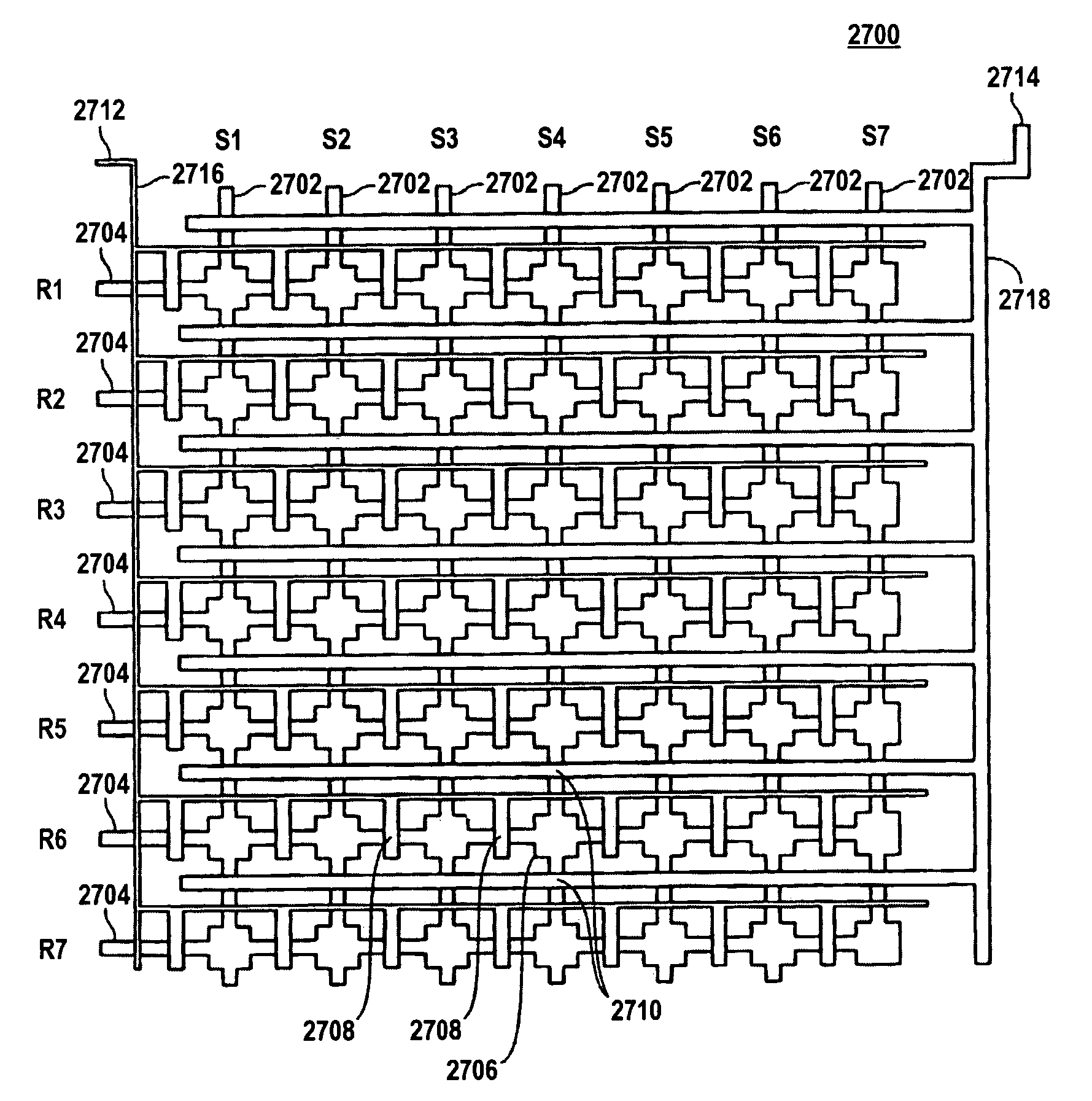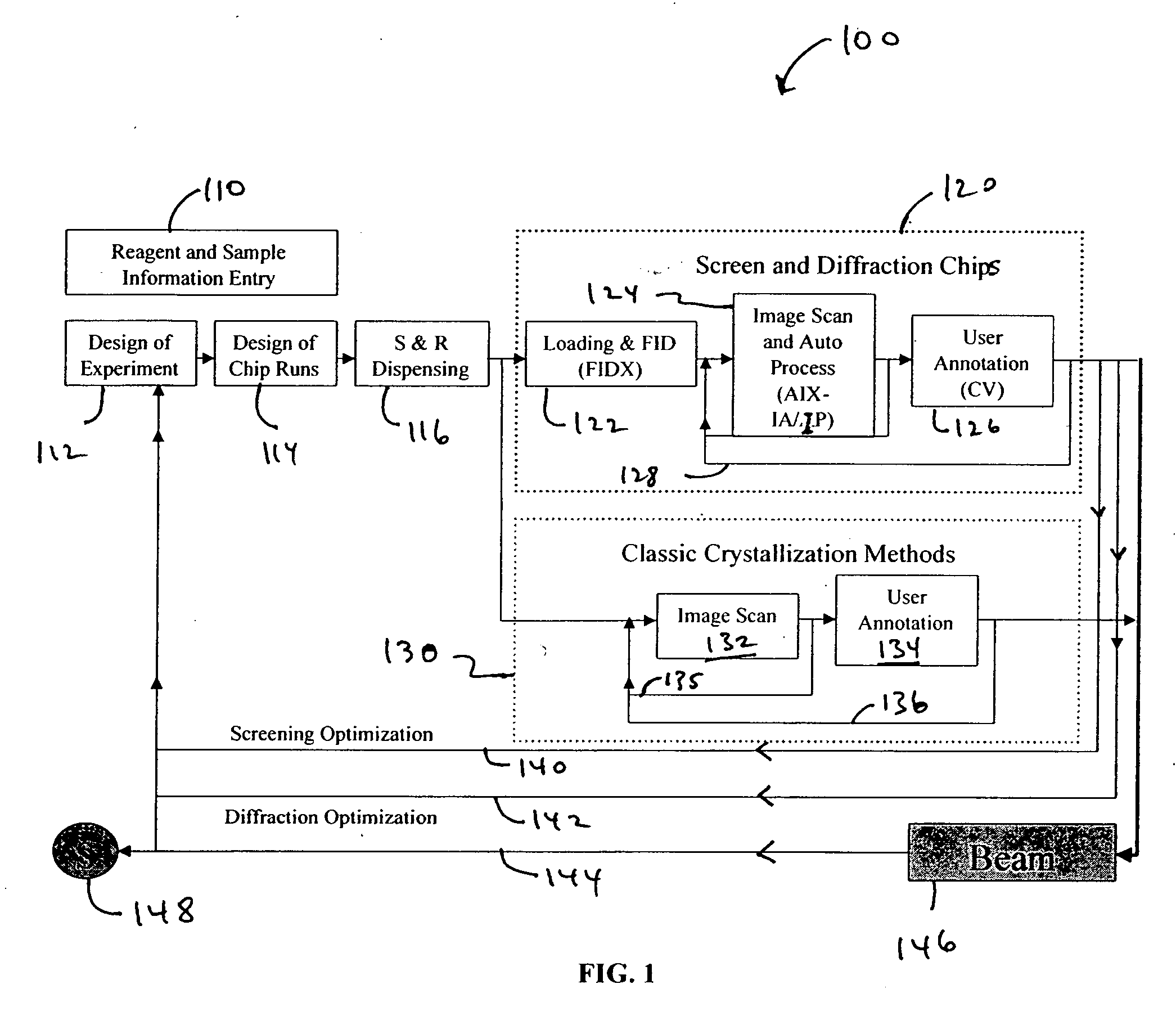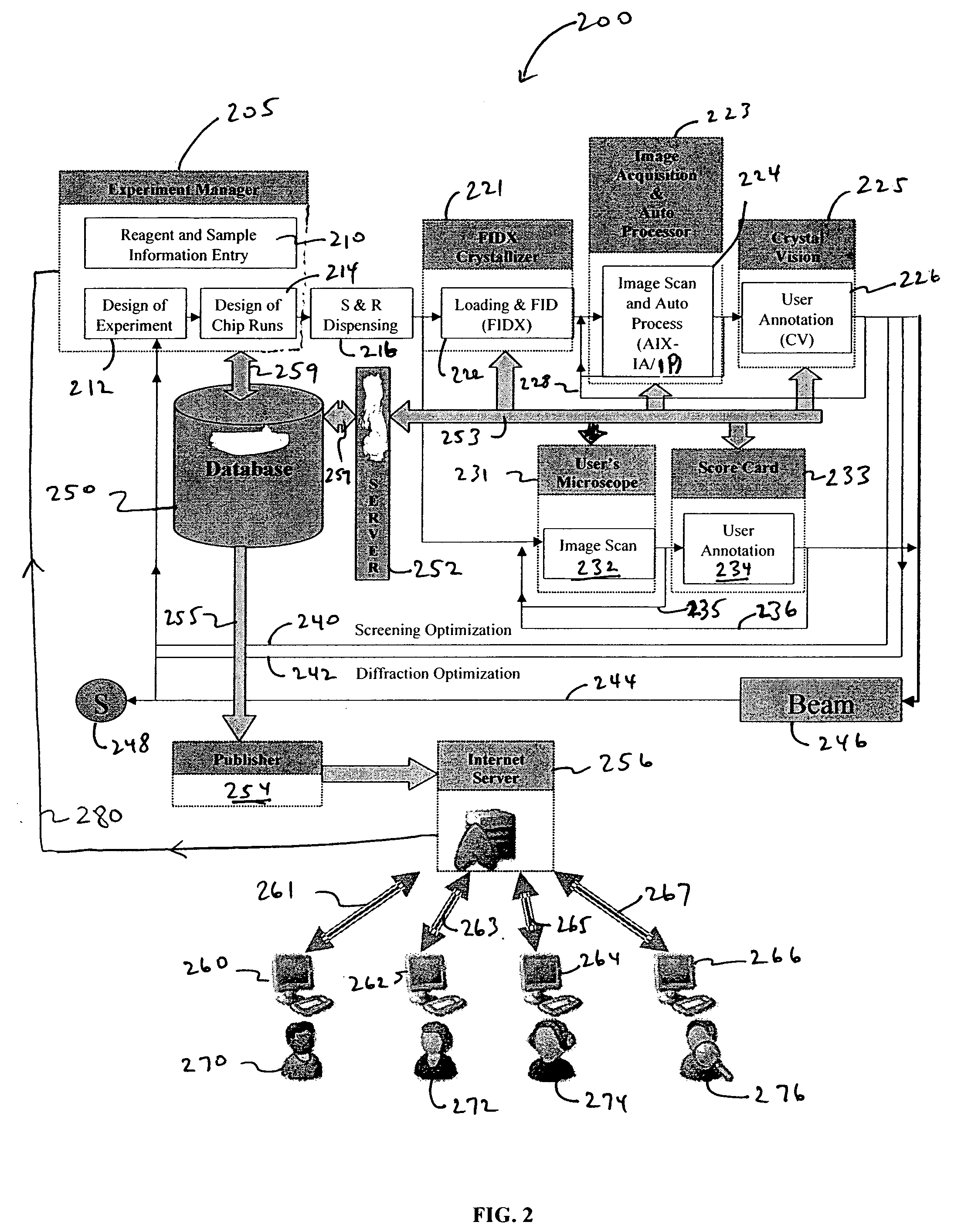Analysis engine and database for manipulating parameters for fluidic systems on a chip
a fluidic system and analysis engine technology, applied in the field of fluid based processing techniques, can solve the problems of not being able to form a highly ordered crystalline structure, requiring much trial and error and patience, and generally difficult or sometimes impossible to achieve high-quality crystal formation using conventional techniques, so as to reduce workload and increase system efficiency
- Summary
- Abstract
- Description
- Claims
- Application Information
AI Technical Summary
Benefits of technology
Problems solved by technology
Method used
Image
Examples
example 1
Signal Strength Evaluations
[0577] I. Introduction
[0578] The purpose of this set of experiments was to demonstrate that successful PCR reactions can be conducted with a microfluidic device of the design set forth herein with signal strength greater than 50% of the Macro TaqMan reaction.
[0579] II. Microfluidic Device
[0580] A three layer microfluidic device, fabricated using the MSL process, was designed and fabricated for conducting the experiments described in the following example; FIG. 29A shows a cross-sectional view of the device. As shown, the device 2900 includes a layer 2922 into which is formed the flow channels. This fluid layer 2922 is sandwiched between an overlaying layer 2920 that includes the control and guard layers and an underlying sealing layer 2924. The sealing layer 2924 forms one side of the flow channels. The resulting three-layer structure is affixed to a substrate 2926 (in this example, a slide or coverslip), which provides structural stiffness, increases ...
example 2
Verification of PCR by Gel Electrophoresis
[0593] I. Introduction
[0594] As an alternative method to prove amplification of DNA was occurring in the microfluidic device, an experiment to detect PCR product by gel electrophoresis was performed. PCR reactions compositions were as described in Example 1, except the TaqMan probe was omitted and the β-actin forward primer was conjugated to FAM.
[0595] II. Procedure
[0596] A. Microfluidic Device
[0597] A three layer microfluidic device, fabricated using the MSL process, was designed and fabricated for conducting the experiments described in this example; FIG. 30 shows a schematic view of the design. The device 3000 generally consists of a sample region 3002 and a control region 3004. Sample region 3002 contains three hundred and forty-one 1 nl reaction sites 3008 represented by the rectangles arrayed along flow channel 3006, which includes inlet via 3010 and outlet via 3012. Control region 3004 contains three control flow channels 3014 ea...
example 3
Massive Partitioning
[0603] The polymerase chain reaction (PCR) has become an essential tool in molecular biology. Its combination of sensitivity (amplification of single molecules of DNA), specificity (distinguishing single base mismatches) and dynamic range (105 with realtime instrumentation) make it one of the most powerful analytical tools in existence. We demonstrate here that PCR performance improves as the reaction volume is reduced: we have performed 21,000 simultaneous PCR reactions in a single microfluidic chip, in a volume of 90 pL per reaction and with single template molecule sensitivity.
[0604]FIGS. 31A-31D depict a single bank and dual bank partitioning microfluidic device where multilayer soft lithography (MSL) (1), was used to create elastomeric microfluidic chips which use active valves to massively partition each of several liquid samples into a multitude of isolated reaction volumes. After injection of the samples into inlet 3103 which is in communication with br...
PUM
| Property | Measurement | Unit |
|---|---|---|
| Length | aaaaa | aaaaa |
| Volume | aaaaa | aaaaa |
| Temperature | aaaaa | aaaaa |
Abstract
Description
Claims
Application Information
 Login to View More
Login to View More - R&D
- Intellectual Property
- Life Sciences
- Materials
- Tech Scout
- Unparalleled Data Quality
- Higher Quality Content
- 60% Fewer Hallucinations
Browse by: Latest US Patents, China's latest patents, Technical Efficacy Thesaurus, Application Domain, Technology Topic, Popular Technical Reports.
© 2025 PatSnap. All rights reserved.Legal|Privacy policy|Modern Slavery Act Transparency Statement|Sitemap|About US| Contact US: help@patsnap.com



